Current issue
Displaying 1-15 of 15 articles from this issue
- |<
- <
- 1
- >
- >|
Editorial
-
2024 Volume 41 Issue 3 Pages 505-506
Published: January 30, 2024
Released on J-STAGE: February 20, 2024
Download PDF (244K)
Case Report
-
2024 Volume 41 Issue 3 Pages 507-513
Published: January 30, 2024
Released on J-STAGE: February 20, 2024
Download PDF (269K)
Special Articles
-
2024 Volume 41 Issue 3 Pages 514-519
Published: January 30, 2024
Released on J-STAGE: February 20, 2024
Download PDF (1659K) -
2024 Volume 41 Issue 3 Pages 520-522
Published: January 30, 2024
Released on J-STAGE: February 20, 2024
Download PDF (348K) -
2024 Volume 41 Issue 3 Pages 523-526
Published: January 30, 2024
Released on J-STAGE: February 20, 2024
Download PDF (1242K) -
2024 Volume 41 Issue 3 Pages 527-530
Published: January 30, 2024
Released on J-STAGE: February 20, 2024
Download PDF (660K) -
2024 Volume 41 Issue 3 Pages 531-534
Published: January 30, 2024
Released on J-STAGE: February 20, 2024
Download PDF (670K) -
2024 Volume 41 Issue 3 Pages 535-538
Published: January 30, 2024
Released on J-STAGE: February 20, 2024
Download PDF (461K) -
2024 Volume 41 Issue 3 Pages 539-541
Published: January 30, 2024
Released on J-STAGE: February 20, 2024
Download PDF (1715K) -
2024 Volume 41 Issue 3 Pages 542-560
Published: January 30, 2024
Released on J-STAGE: February 20, 2024
Download PDF (15799K) -
2024 Volume 41 Issue 3 Pages 561-615
Published: January 30, 2024
Released on J-STAGE: February 20, 2024
Download PDF (41216K) -
2024 Volume 41 Issue 3 Pages 616-665
Published: January 30, 2024
Released on J-STAGE: February 20, 2024
Download PDF (37633K) -
2024 Volume 41 Issue 3 Pages 666-702
Published: January 30, 2024
Released on J-STAGE: February 20, 2024
Download PDF (26999K) -
2024 Volume 41 Issue 3 Pages 703-731
Published: January 30, 2024
Released on J-STAGE: February 20, 2024
Download PDF (18798K)
Letters to the Editor
-
2024 Volume 41 Issue 3 Pages 732-733
Published: January 30, 2024
Released on J-STAGE: February 20, 2024
Download PDF (130K)
- |<
- <
- 1
- >
- >|
